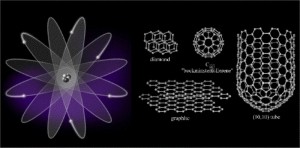
Technical Information
Sound Composites Classical Stringed Instrument Fingerboards allow for use of traditional application techniques with great results.Advantages include:
1 Tooling is minimal. The boards are provided in standard size blanks. A tooling matrix material is placed on the sides and at the end of the boards that can be easily tooled to fit the board with the instrument neck during installation. We position the structural carbon within the board so that luthiers will avoid contacting this stiff, abrasive material along other core materials.
2 Initial board surfacing and need for resurfacing is minimal. Boards are supplied with the proper minimum standard of relief. The low-friction graphite-based tooling medium is uniformly consistent, resulting in easy dressing of the surface. Since there is no grain, there isn’t any blow or chipping when properly working the material. Standard scrapers, files and sandpapers are all appropriate.
3 The fingerboards offer outstanding durability. Sound Composites boards in constant use have not needed refinishing since installations as long ago as 1981. Thus intermittent redressing and periodic replacement are no longer required.
4 The fingerboard surface is stable. There is no swelling or movement on the board surface due to changes in humidity and/or temperature. Therefore the boards never require redressing. This is in contrast to the routine return of instruments with Ebony boards for removal of these periodic buzz-producing inconsistencies.
5 The boards may optionally be supplied with a 0.025” maple veneer on the back ‘glue’ surface to facilitate the use of traditional hide glue. For boards provided without backing, aliphatic resin (Tight Bond/yellow glue) is an excellent choice.
6 Sound Composites fingerboards have a smooth, low friction surface for ease in playing. Player often comment that instruments with these boards are very comfortable in the hand.
7 Moses fingerboards contribute to high quality tone production. This is due to the consistency of the material surface, coupled with the tremendous ability of the ‘tonally filtered’ carbon fiber to move vibration through the neck beam.
8 All Sound Composites stringed instrument components have a visually pleasing ‘natural’ aesthetic due to the soft, lustrous quality of our surface material. Refinishing with 0000 steel wool or 600/800 sandpaper maintains this look. A relaxed eye often believes that they are made of Ebony until the difference is pointed out.
In essence, Sound Composites has developed a medium that combines excellent tone generation with easy tooling and impressive durability to produce products with a natural look and feel.